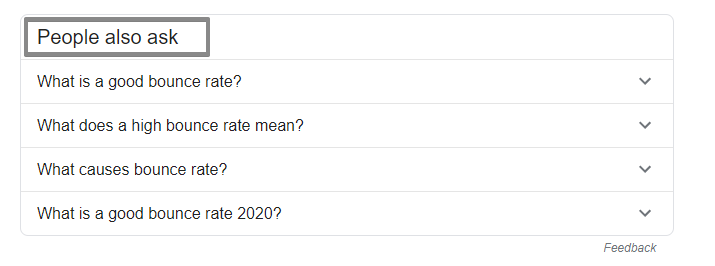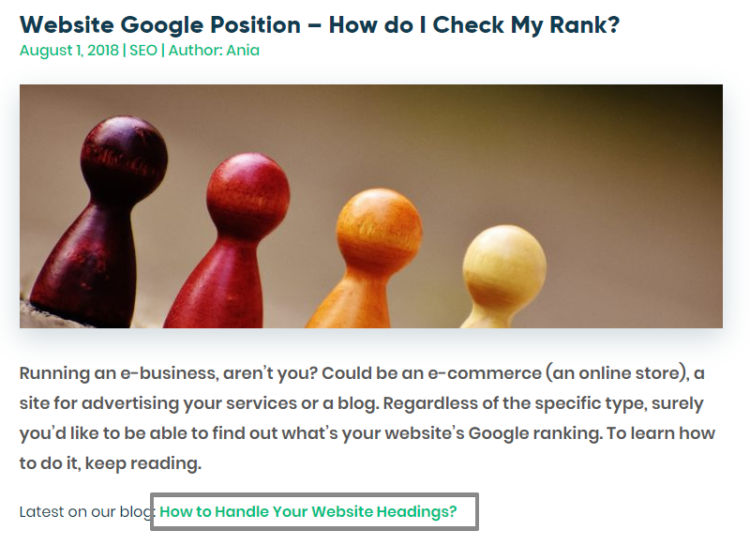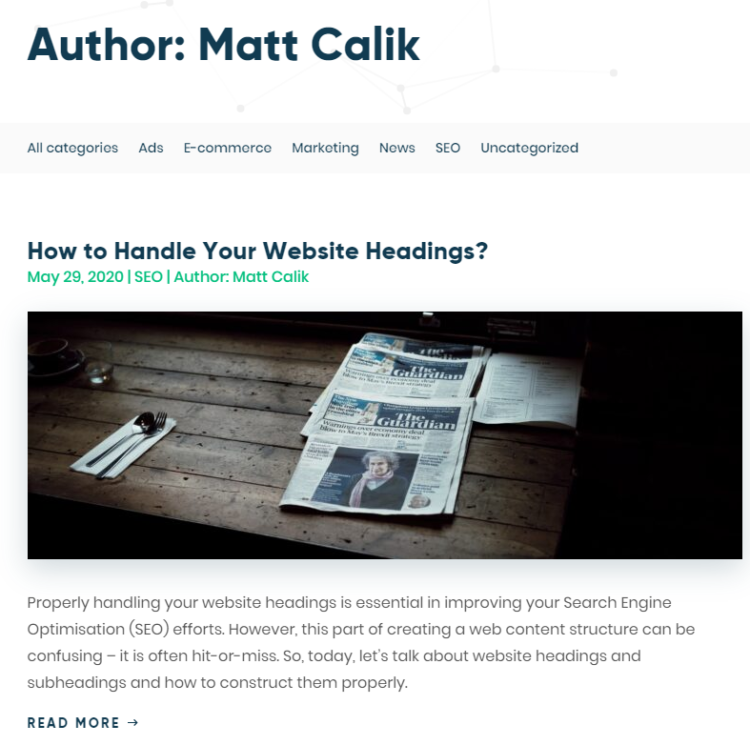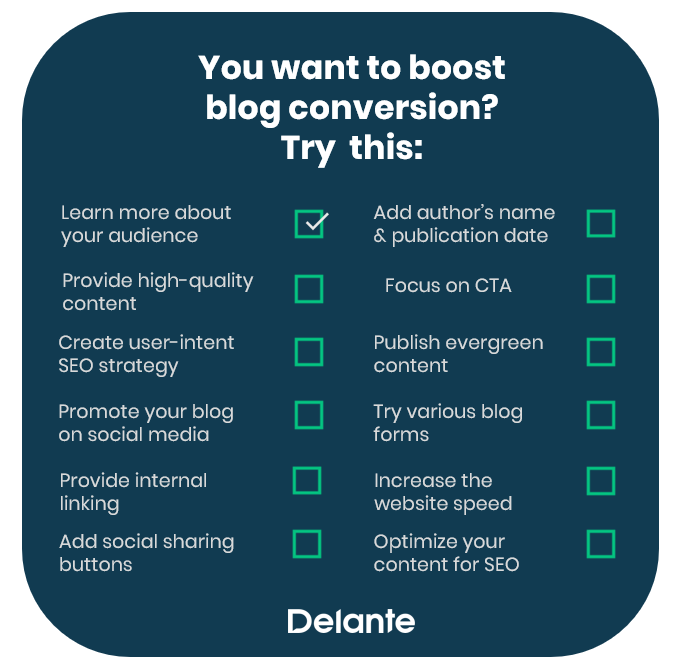12 Ways to Boost Blog Conversion Rates

The company blog has really great potential: it builds users’ trust in a brand, increases traffic on a website, but – what is extremely important – can boost conversion rate. If you want to use the full potential of your blog, you need to have SEO and content marketing strategies. And which ones will guarantee the greatest success? Here are 12 tips to boost blog conversion rates.
1. Learn More About Your Audience
You can post so many articles on various topics, however, if their content is not relevant, business-related or tailored to your audience… well, you won’t achieve the desired success. Already at the stage of creating a blog, it’s worth considering who you’re actually planning to run it for.
Wondering how to find out who your target audience is? There are several ways to verify that:
- Conduct a survey. Send a questionnaire to some of your readers and find out what topics interest them, what are their expectations or what are the strong and weak points of your blog and published content.
- Check the comments. Comments are a great way to understand your audience, if you listen carefully to what they say, you’ll definitely gain a lot.
- Check social metrics. Discover which articles were most often shared in social media, such as Facebook, LinkedIn, and Twitter.
- Use Google Analytics. If you really want to get to know your audience, Google Analytics will tell you almost everything about them: where they come from, what they like, how often they visit your site.
2. Provide High-Quality Content
Okay, I know this may seem a bit cliché. After all, we all strive for quality content on our blogs. However, I would like to point out that the quality of content on a blog is not only determined by what you write about but how you write.
Keep the following in mind:
- ensure the correct language of your content – remember that users (at least some of them) pay attention to correct grammar or punctuation,
- keep paragraphs short – nobody likes long paragraphs that don’t have an end, reading them is just exhausting,
- use lists or bullet points – this way, the content will be well-organized and legible,
- choose the right style and tone of expression – given who your target audience is, try to adjust your style to them,
- choose descriptive headings and subheadings – each subheading should briefly describe what type of information it contains.
3. Create User-Intent SEO Strategy
Some of you probably hear the term “user intent” for the first time, however, I think that once I explain what it is and what kinds of user intent search are, you will understand how much blog conversion rate can increase with an appropriate search intent analysis.
So let’s begin with a short definition: the user is what users want when they search for something in Google.
What are the main types of search intent?
- Navigational – user searches for a specific website or brand, e.g. Delante or Facebook.
- Informational – The user wants to obtain information on a given topic, e.g. “what is bounce rate”. By the way, as you can see above, Google in the section “People also ask” gives examples of similar user searches.
- Transactional – user wants to make a transaction, e.g. “flight tickets to Rome”
- Commercial – user searches for information or reviews of a product he/she intends to buy, e.g. “the best language learning app for iPhone reviews”
If you want to learn more about search intent SEO, we have prepared an exhaustive guide on our blog. Check this out!
4. Provide Internal Linking
As we all know, links are one of the main elements of SEO strategy. You need to provide both adequate backlinks as well as internal and external links. Let’s now focus on internal links, as they are most important for increasing traffic and conversion rate.
Remember: when it comes to internal links, it is not the quantity that counts, but the quality. Provide links to your products or services, however, what’s really important, links should be related to the topic of the article. Unnecessary links won’t certainly give you more conversion. Look at this example: if your blog post indicates the best types of garden furniture and you include a link to the best Christmas gift ideas, conversion really won’t be that high. This is because users have visited your blog because they were most likely planning to buy garden furniture and weren’t looking for Christmas gifts.
It is also a good idea to add an internal link to recent posts on your blog. It’ll make users spend more time on your website, and that’s what you want, right? Look at this example from Delante blog:
5. Promote Your Blog in Social Media
Social media are a real thing in modern marketing. Even if you have a fantastic website, you run an inspiring blog, but your brand doesn’t have accounts on the most popular social media, you really miss a chance for a great conversion rate.
After publishing your blog post, don’t forget to notify your followers on Facebook, Twitter, or LinkedIn. As you can easily guess, users don’t visit company blogs every day to check if there is any new interesting article there. So post about them in social media and you will see that conversion rate will increase quickly.
6. Add Social Sharing Buttons
Speaking of social media, don’t forget about their users. Currently, users are more and more willing to share valuable content with other people in social media. So if you run a blog on which you post high-quality content, many users will probably want to share it. Make it easy for them! Add social sharing buttons under blog posts. Thanks to them, users will be able to share your content easily, and you will also benefit from it. If users share your blog post, it will be a signal to other people that your content is of high quality. As a result, they will more likely visit your blog, increasing traffic to your site.
7. Add Author’s Name and Publication Date
Why is adding a date of posting a blog post a great idea? First of all, is gives users a signal that your blog post is up-to-date and that it provides fresh content (especially crucial in case of real-time marketing). What’s important, this date will appear not only on your website but also in the search results (unless you have properly implemented structured data, of course):
Adding the name of an author is also a brilliant solution. First of all, it increases users’ trust in your brand, as they like to feel that there are real people behind it. Second of all, it gives you a great opportunity to add a subpage with articles written by a given author. After all, if users appreciate one article, they will certainly be more willing to look for another one. As a result, they will spend more time on your website.
8. Focus on Call To Action
Conversion – that’s what we care about most when running a company blog. But how to turn a passive visitor into an active and engaged customer? This is far more complicated. After all, even if users visit your blog and read your content, you don’t want them to leave immediately after finishing, right?
Include call to action buttons on pages of each blog posts so that visitors can easily contact you. Show them that you are ready to help!
So what call to action button should be like?
- visible and eye-catching
- visually pleasing
- appealing and persuasive
- filled with a good copy (preferably in the first person – “how can we/I help you?”)
- in accordance with “less is more” rule
9. Publish Evergreen Content
So what is evergreen content? Simply put, it’s the type of content that never gets old. Some topics will just always be of interest to users and they will look for them, not only seasonally, but all year round. Thanks to evergreen content, you’ll gain increased blog traffic and have a higher conversion rate.
Perfect evergreen content should:
- be SEO-friendly,
- be informative, substantial,
- have the potential to generate traffic to the website,
- exclude seasonal keywords.
10. Try Various Blog Forms
Remember that running a blog is not just about posting articles. You can do so much more than that! What’s more, it’s a good idea and more often adopted by different brands to include media on blog. If you have such an opportunity, go for it. Test your target audience and see what kind of content works best.
What forms of content are worth considering?
- news
- guides
- case studies
- vlogs
- webinars
- podcasts
- and so much more…
11. Increase Website Speed
On our blog, you will find an entry on website speed importance in SEO as well as in user experience. I explain there in detail how to improve page speed to effectively increase conversion and reduce bounce rate. That’s why I don’t go into detail here.
But I want to stress that the website speed is something you can’t neglect. Unfortunately, because of the website which takes forever to fully load, you may lose potential customers before they even land on your blog. Don’t wait – you need to act quickly and improve it. Remember that this is also one of the ranking factors for Google!
12. Optimize Your Content for SEO
Last but not least! You can post really interesting and substantial content on your blog, however, if it is not optimized for SEO, you will not achieve great success. And you will definitely not increase your conversion rate…
So how to properly optimize your blog for SEO?
Rule 1: Focus on keywords
If you’ve been running your company blog for quite some time now, you’re sure to find lots of valuable data in Google Search Console. Check to which keywords your website appears in the search results and which blog posts are the most popular ones. That’s a good start for identifying which keywords have the greatest potential for conversion. So focus on them and insert them into your content, for example in HTML emphasis tags (<strong> and <em>).
Rule 2: Provide a catchy (and SEO-friendly) title
The title is definitely one of the most important elements on the website – both users and Google crawlers see it in the first place. So try to make it catchy, compelling, but at the same time include the most prominent keyword. By optimizing the title, your blog post will definitely rank higher in the search results, and maybe, who knows, it will be displayed in position zero.
Rule 3: Optimize external linking
All external links, e.g. to the references in your article, should have the “nofollow” attribute. This attribute instructs search engines not to follow the link and, as a result, links with this attribute should not contribute to rankings.
Don’t want to forget about anything from our list? Grab a checklist:
Conclusion
The company blog gives great opportunities to increase sales. However, you must remember that this is possible above all thanks to well-planned content marketing and SEO strategies. Above I presented 12, in my opinion, the most effective ways to achieve success with a blog and increase conversion rate. If you need professional help in planning marketing strategies, feel free to contact us. Our SEO specialists will do their best to use the full potential of your company blog.













Thanks for the tips Matt, really helpful! I was wondering for a while what to do to make my blog more profitable & will try your ways 🙂